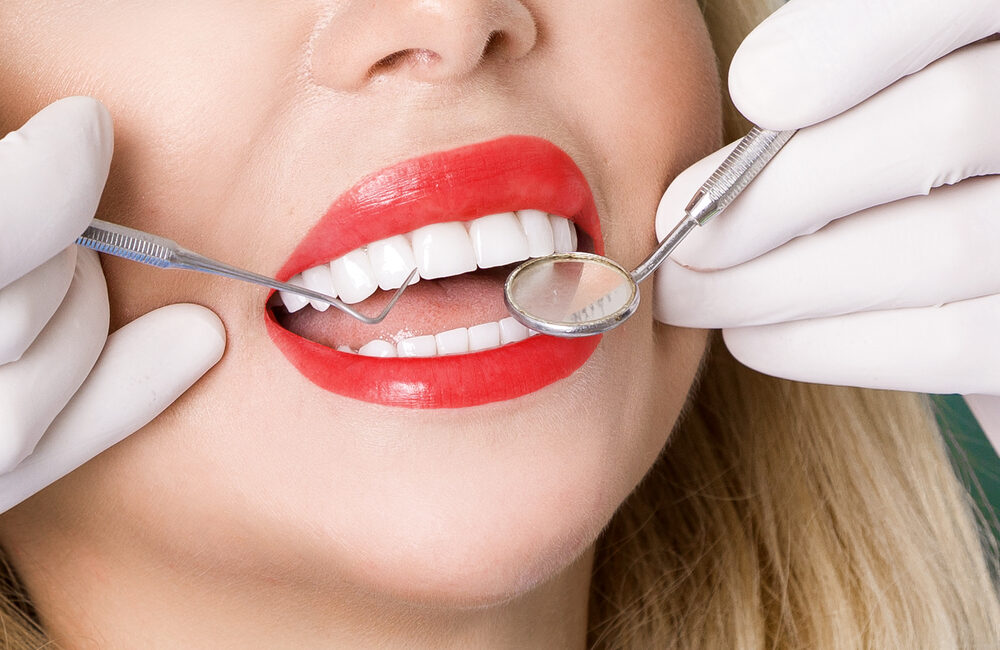
The process of applying porcelain veneers usually requires three dental appointments.
1) At your initial consultation
You’ll likely see a mock-up or a computer simulation of what you’d look like with different shapes, sizes, and colors of teeth. The dentist may also provide you with a “workup” model that you can insert into your mouth to visualize your appearance with veneers.
2) At your veneer prep procedure
Your dentist will give you local anesthesia, to prevent discomfort, and then shave about half a millimeter (the thickness of the veneer) off your tooth enamel, to make room for the new porcelain. If you want your teeth to be shorter than they naturally are, they’ll file down the bottoms of the teeth as well.
Removing enamel is what’s referred to as full-prep veneer. If your teeth are already in pretty decent shape, you can opt for a no-prep veneer, with no enamel removed before placing veneers, or minimal prep, which means the dentist removes less tooth enamel. Just be aware that you do run the risk of the final result looking a bit bulky.
Then the dentist makes a mold of your teeth, which goes to the lab or a ceramist, to create your new custom veneers. This typically takes one to three weeks. Some master ceramists hand-paint each layer to lend your veneers the most natural look.
In the meantime, your dentist will give you temporary veneers to wear. The temporary veneers are really helpful for both the patient and the dentist, If something about the temporaries doesn’t look right, you can make changes before the permanent veneers go on.
During the temporary phase, you’ll need to avoid eating or drinking anything too acidic, sweet, hot, or cold. The teeth are a little bit naked during this stage, so there can be increased sensitivity. You’ll also need to avoid foods that are tough to chew (like steak, bagels, and apples) so you don’t crack the temporaries, which aren’t as strong as real teeth or permanent veneers.
3) During the procedure for applying porcelain veneers, your dentist will administer local anesthesia
Once you’re numb, your dentist will try the new veneers on you for fit, making changes as needed.
Then they’ll rough up the surface of your teeth, giving the veneers a grippy surface to adhere to, before applying a thin layer of bonding cement. They will then place the veneers and use a special light to activate the quick-dry chemicals in the cement.
After placing the veneers, your dentist will assess your bite and perform any required adjustments. This whole process isn’t quick: expect to be in the chair for about three hours for every 10 teeth.
You can also expect to need several shorter follow-up dental visits in the weeks and months afterward.
Are porcelain veneers painful?
You’ll be numb while the veneers are applied, so you shouldn’t feel pain. Recovery isn’t too painful either, though about half of veneer patients experience something called bonding sensitivity, as the bonding cement irritates their teeth. This can cause pain for up to six hours after the anesthesia wears off; then it should subside to an occasional dull ache.
If you’ve had more than eight veneers applied, you might experience some gum soreness as your gums adapt to the new teeth. Over-the-counter pain medication will likely be enough to keep you comfortable.
If you’re still feeling pain a few days after the procedure or your bite feels weird, see your dentist. With a file, they can make adjustments or eliminate minuscule fragments of cement causing discomfort, ensuring your ease.
Related / Dental Bonding vs. Veneers: Which Is Right for You?












